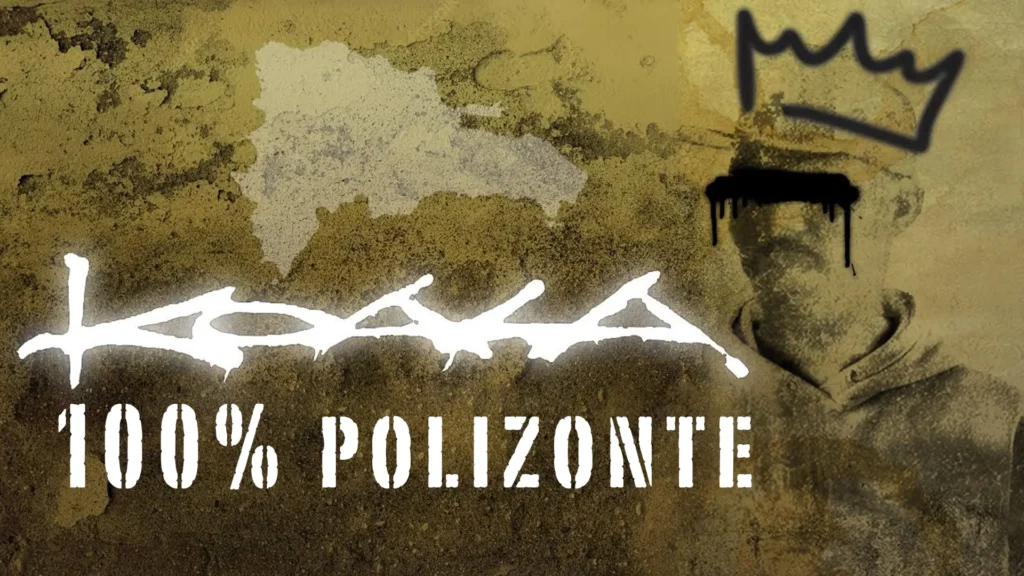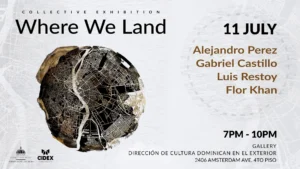By Juan Butten
Since I started in the graffiti scene in Santo Domingo in the late 1980s, I always saw Koala’s tag everywhere. The first signature I saw was “KOALA ZX” in the Villa Duarte area, and then his name appeared everywhere. I kept photos of his work for a book I started in 2006, completely dedicated to graffiti, but unfortunately, the hard drive where I stored those images stopped working.
For me, and for almost everyone who truly knows graffiti in the Dominican Republic, the importance of Koala F2 transcends that of a mere writer; he was a living legend in the country’s urban scene. For over 30 years, his signature became an icon that crossed not only the streets of his country but also other nations around the world. His journey as a “stowaway” led him to leave his mark in various cities, leaving an imprint that would resonate in graffiti culture.
Koala, the son of a police officer who moved from town to town, had to fight from a young age to survive. Especially after his mother decided to leave home, he was left alone with his father, who was almost always absent. During the moves, Koala stayed on the street, shining shoes with his friend Hugo and selling candies and newspapers. At a very young age, he enjoyed the freedom granted by his parents’ absence.

At first, in his neighborhood, they called him Lito, but eventually everyone began calling him Koala, as if the nickname had consumed him. I remember an anecdote shared with me by another legendary graffiti writer, EL AD. He recounted that one day they went to visit Koala, along with JB, and found him with Hugo in a cave in the Maquiteria sector, where there was a pigsty. The walls of the cave were filled with names. When a spray can was passed to JB to write his name, he asked the others where to put it, and Koala told him to write it on one of the pigs. Everyone laughed.
Another story from Hugo mentions that once they went to the river, and he saw Koala writing on stones and throwing them into the water. When he saw him, he asked why he was doing it, and Koala replied, “I want even the fish to see my name.”
From the beginning, Koala F2 was a prolific artist who mastered the technique of “tajeo.” His style was unique and characterized by the use of avocado seed leaves, charcoal pencils, spray paint, and even brushes. This variety of tools allowed him to convey his message on any available surface. His signature was not only a symbol of presence but also of resistance and creativity.
I remember as a teenager looking for stray dogs and tagging them with his signature. Then I would scare them so they would run around showing off his tag throughout the neighborhood. Once, walking through Villa Duarte, I saw a cow with his tag on its side. According to a guy from the street, in every police station he visited, he saw his signature, and in many of those places, it was also written. In the film “La cárcel de La Victoria: El cuarto hombre” (2004), his signature appears, as many claim he was incarcerated in almost all of them.
In 2019, I embarked on a journey with friends from New York where we aimed to travel around the entire country. In every place we went, we saw his signature. We started in Santiago Rodríguez and continued through Dajabón, Montecristi, and Puerto Plata, until we reached Samaná. We did this for nearly fifteen days, waking up in different towns, and wherever we went, his name was present. Throughout his vandalistic pilgrimage, Koala F2 ventured to tag all 31 provinces of the Dominican Republic, as well as almost all neighborhoods in the National District. His art was visible in unusual places: from the top of the Duarte Bridge, where he set a record of signatures, to pigs, dogs, cows, transformers, and cargo ships. He was a true stowaway who knew no limits or borders, challenging the norms of graffiti at the time.
The last time Hugo saw him, he was in a wheelchair because, according to what he had been told, he had been hit by a car. It was said he had received an inheritance and was wandering around drunk. Even so, he continued to carry out his vandalistic acts to the extent that he made the news for tagging almost the entire town of Seibo with his name.
I have also documented the evolution of his letters; after a problem he had, he lost the use of one hand, and unable to write as he once did, in his later years he began writing elongated letters, which we called “spatial letters.” This influenced a long list of writers who copied his style, perhaps not by choice, but due to the difficulties he faced with the mobility of his left hand.
Koala F2 is remembered not only for his technical skill but also for the mystery surrounding his personal life. Few knew the details of his story, which fueled the legend around his figure. For many in the graffiti community in the country, he was a symbol of freedom and expression, an artist who used his talent to communicate what he felt and observed in his surroundings.
The Dominican graffiti community considers him the most important carver of the Island. His influence endures in the new generations of urban artists who see him as a reference. Koala F2 left an unparalleled legacy, and although he is no longer physically with us, his spirit and his art continue to live on in the streets he once roamed.
In 2016, I had the opportunity to be close to Koala. Although he didn’t know me, I knew he knew about me, as I had written a lot in his area, especially in the year I retired in 1994. I found out from his friend Hugo, who told me they had spoken about my tag, FASE UNO, and everything I did in his zone. I remember seeing a message in front of the Navy that said: “KOALA 100% POLIZONTE,” written in rusty red spray, which made me smile. Despite being inactive on the streets, I have always loved graffiti and admired his journey and contributions to this marginalized culture.
That day, I saw him for the first time in front of a small shop in Villa Duarte while waiting for a taxi to the airport. I thought about greeting him, but his attitude and the fact that he seemed drunk, arguing with the shopkeeper and showing a desire to fight, made me hesitate. The shopkeeper called him “Koala,” and upon hearing his name, I immediately recognized his image, as I had seen his photo in a blog about urban culture uploaded by Jonas Mudvi, taken by the singer and graffiti artist La Botella. I also knew he had a reputation as a troublesome guy, likely due to the life he had lived. There wasn’t a single place in Villa Duarte where his name or signature didn’t exist.
In 2018, I met Hugo AA and decided to interview him. We began a search in every Hogar Crea in Santo Domingo, but in each place, it was the same: either he had left or he had been expelled due to issues with some residents of those institutions. We spent months in that search, hoping to find him and have a conversation where we could offer him money in exchange for learning his story, not only as a graffiti writer but also as an individual. Unfortunately, it was impossible.
We visited drug spots where he was known, and it was always the same: either they said he was in jail or that he had died. One night, I spoke with my friend Niche 83, who suggested I search Google for any news about his death. A guy from the Villa Consuelo area mentioned that he had been killed by a Haitian over a dispute about 50 pesos. That’s how I began to investigate, and inadvertently found the grave news that it was indeed true. That’s when I learned that they called him “Lito” because his real name was Pascual Pascualito.
This is how it appeared in the newspaper:
Man killed over 50 pesos in Villa Consuelo
The National Police is pursuing a bus washer who yesterday killed another of Haitian nationality by stabbing him several times during an argument over the sum of 50 pesos.
The victim was identified only as Pascual, who died at the Doctor Darío Conteras hospital while receiving medical attention. Pascual was killed by another bus washer nicknamed “19,” who fled after committing the act and is being pursued by the police.
The incident occurred shortly before 9:00 AM yesterday at the bus stop for those traveling to Jimaní, on the corner of Avenida Duarte and Teniente Amado García Guerrero, in the Villa Consuelo sector.
Witnesses told police investigators that “19” washed a bus, but “Pascual Koala” (the deceased) collected the 50 pesos for the job, leading to an argument between them during which Pascual armed himself with a piece of wood. In those circumstances, “19” pulled out a knife he was carrying and inflicted the wounds that caused his death.
The body was transferred to the National Institute of Forensic Pathology for autopsy purposes.









